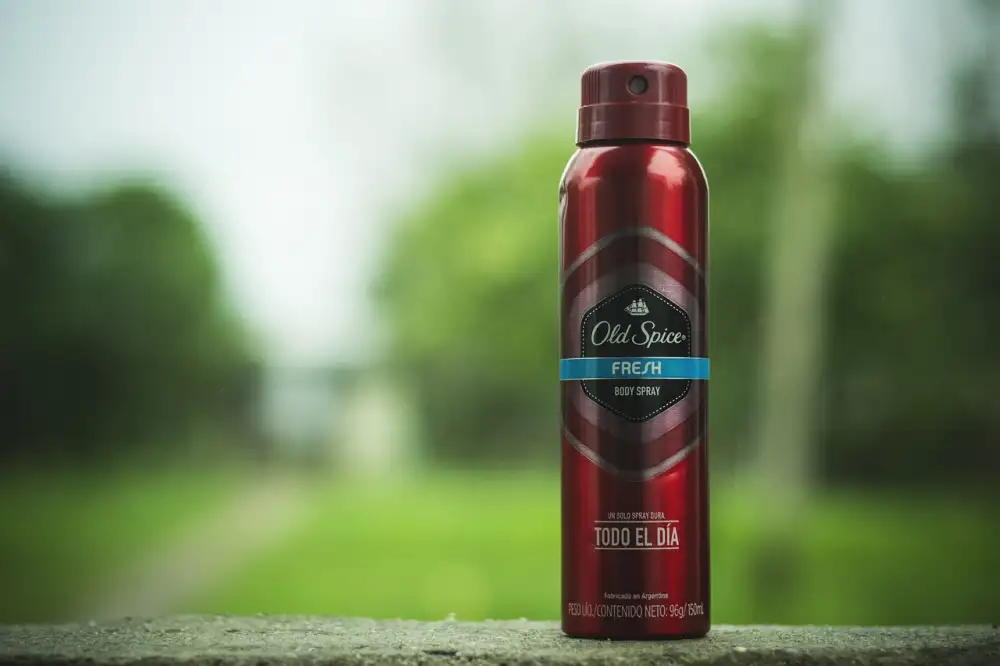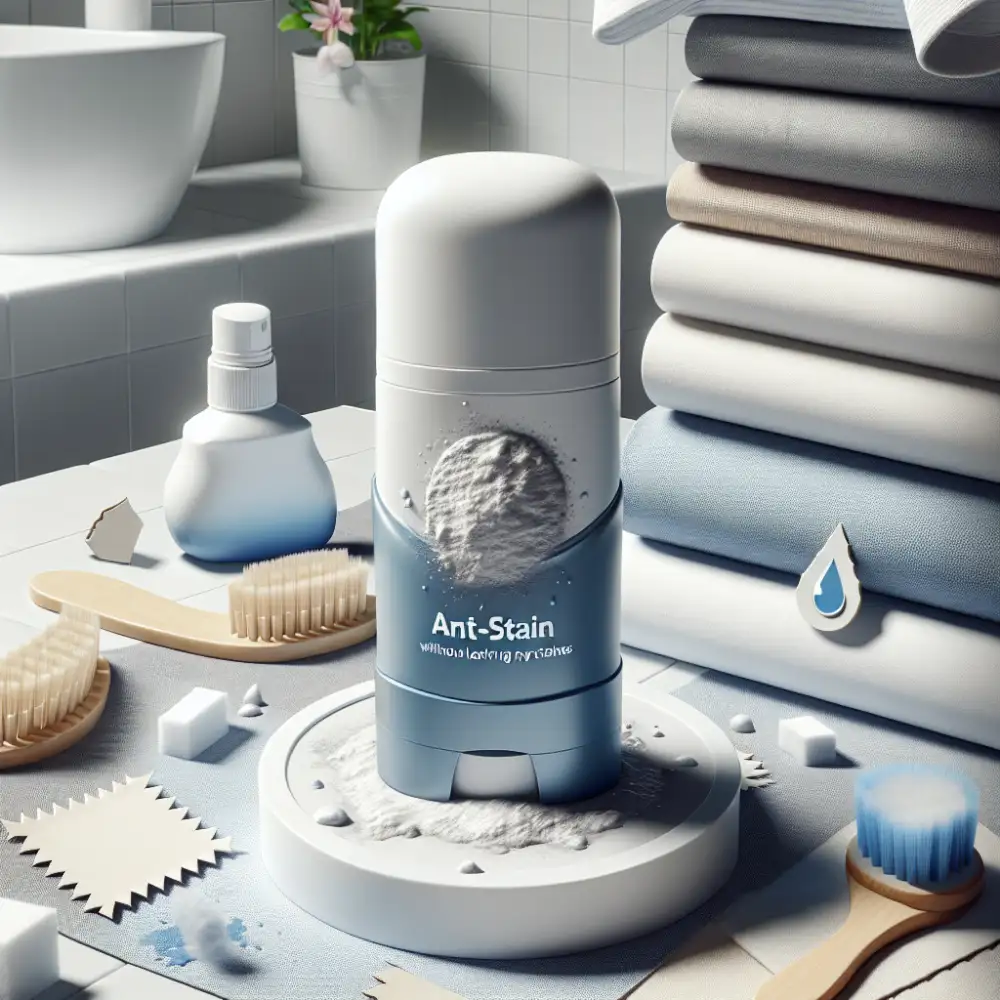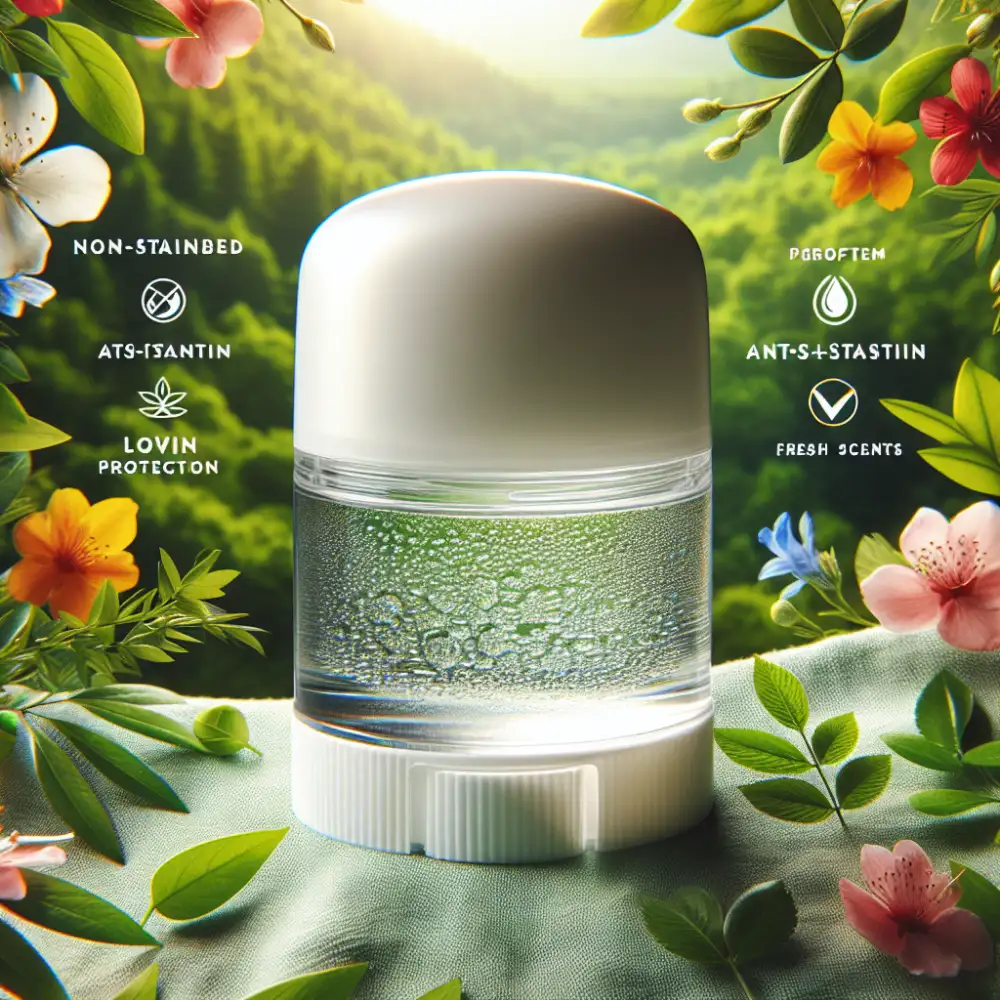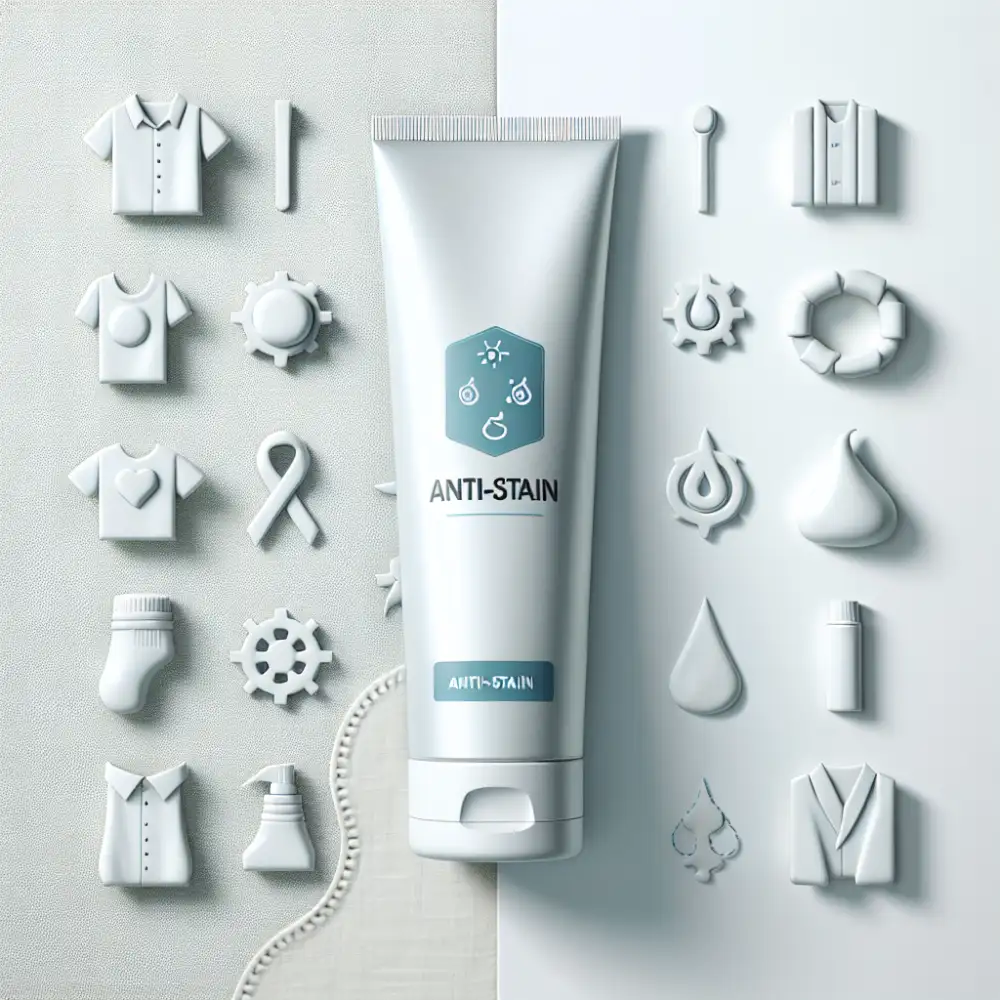Anti-Stain Deodorant: Your Guide to Staying Fresh and Spotless

Anti-stain deodorants: what are they?
Anti-stain deodorants are formulated to minimize or eliminate the appearance of those pesky white or yellow marks that regular deodorants can leave on your clothes. We've all been there, right? You're getting dressed, feeling good, and then you see it – the dreaded deodorant stain. It's a fashion faux pas that can happen to the best of us.
Traditional deodorants often contain ingredients like aluminum, salts, and antiperspirant actives that can bind to fabrics and create those unsightly marks. Anti-stain deodorants, on the other hand, are designed to prevent this from happening. They typically achieve this through a few key strategies:
Clear Formulas: Many anti-stain deodorants are designed with clear or translucent formulas. This means they are less likely to leave a visible residue on your clothes, regardless of the color of the fabric.
Modified Ingredients: Some anti-stain deodorants use alternative ingredients or modified versions of traditional deodorant components. For example, they might contain aluminum compounds that are less likely to interact with fabrics and cause discoloration.
Quick-Drying Formulas: Deodorants that dry quickly give the ingredients less time to transfer onto your clothes and cause stains.
Fabric Protection: Certain anti-stain deodorants include ingredients that create a barrier between your skin and your clothes, helping to prevent the transfer of deodorant residue.
When choosing an anti-stain deodorant, consider your skin type and sensitivity, as well as your personal preferences for scent and level of sweat protection. Look for products labeled as "anti-stain," "invisible solid," "clear gel," or "non-marking" to increase your chances of finding a deodorant that will keep both you and your clothes looking their best.
How anti-stain deodorants work
Antiperspirants and deodorants are essential for many people, but they can also be notorious for leaving unsightly stains on clothes. These stains are often caused by the aluminum salts found in antiperspirants, which are designed to block sweat ducts and reduce perspiration. When these salts mix with sweat and your body’s natural oils, they can create a yellowish residue that clings to fabric fibers.
Anti-stain deodorants are formulated to minimize or prevent these frustrating marks. They typically achieve this through a few key strategies:
• Reduced Aluminum: Some anti-stain deodorants contain lower levels of aluminum salts or use alternative ingredients to reduce the potential for staining. These formulas might not be as effective at blocking sweat as traditional antiperspirants, but they offer a good compromise for those concerned about stains.
• Clear Formulas: Many anti-stain deodorants are designed to go on clear and dry quickly, minimizing the chance of any residue transferring to your clothes. These formulas often utilize ingredients like cyclomethicone or dimethicone, which create a smooth, invisible barrier on the skin.

• Stain-Blocking Technology: Some brands have developed innovative technologies specifically designed to prevent stains. These technologies might involve encapsulating the aluminum salts to prevent them from coming into contact with fabric or using special polymers that repel stains.
• Natural Deodorants: For those looking for a more natural approach, some deodorants rely on ingredients like baking soda, arrowroot powder, or essential oils to neutralize odor without the use of aluminum. While these natural options might not prevent sweat, they are less likely to leave behind noticeable stains.
When choosing an anti-stain deodorant, it's essential to consider your individual needs and preferences. If you sweat heavily, you might need a formula with a higher concentration of active ingredients, even if it means a slightly higher risk of staining. On the other hand, if you're primarily concerned about visible marks on your clothes, a clear, quick-drying formula with stain-blocking technology might be your best bet.
| Brand | Type | Anti-Stain Guarantee? | Typical Price Range |
|---|---|---|---|
| Dove | Stick, Spray | Yes, for white marks | $4-$7 |
| Secret | Stick, Gel | Yes, for white marks and yellow stains | $5-$9 |
| Old Spice | Stick, Spray | Yes, for white marks | $4-$7 |
Ingredients to look for and avoid
When searching for an anti-stain deodorant that truly delivers, keep an eye out for these hero ingredients:
Aluminum Chloride: This is the powerhouse ingredient in most antiperspirants. It effectively reduces sweat, which in turn minimizes the chance of sweat stains forming.
Cyclomethicone: Look for this ingredient in clear gel deodorants. It creates a dry, smooth glide that won't leave behind a chalky residue.
Silica: This acts as an absorbent, soaking up any moisture that could lead to staining.
Just as important as knowing what to look for is understanding which ingredients to avoid:
Aluminum Zirconium: While similar to Aluminum Chloride, this ingredient is more likely to leave behind yellow stains, especially on white clothing.
Talc: This common ingredient can mix with sweat and create those dreaded white marks on dark fabrics.
Heavy Fragrances: While a pleasant scent is always nice, heavily fragranced deodorants can sometimes interact with sweat and fabric, leading to discoloration.


Dyes and Colorants: These are often added for aesthetic purposes but can stain clothing, especially lighter fabrics. Opt for clear or dye-free formulas for worry-free wear.
Benefits of using anti-stain deodorant
Anti-stain deodorants are formulated to minimize the appearance of those dreaded white marks on your clothes. This means you can confidently wear your favorite black shirt without worrying about unsightly deodorant residue. Traditional deodorants often contain ingredients that can mix with sweat and your skin's natural oils, leading to yellow stains over time. These stains can be difficult to remove, especially from white or light-colored fabrics. Anti-stain deodorants, however, are designed to prevent this discoloration. They often contain ingredients that help to absorb moisture and prevent the deodorant from interacting with your clothes, keeping them looking their best.
Another benefit is the prevention of white marks on your clothes. These marks occur when the deodorant rubs off on your clothing, leaving a visible residue. Anti-stain deodorants are designed to dry quickly and leave a minimal residue, reducing the risk of white marks. This is especially beneficial for people who wear a lot of dark-colored clothing.
Many anti-stain deodorants are also formulated to be gentle on sensitive skin. They may be free of fragrances, dyes, and other common irritants, making them a good choice for people with sensitive skin.
Finally, using an anti-stain deodorant can save you time and money in the long run. You won't have to spend as much time trying to remove deodorant stains from your clothes, and you may be able to get more wear out of your clothes before having to replace them.
Choosing the right anti-stain deodorant
Finding a deodorant that keeps you feeling fresh without ruining your clothes can feel like searching for a unicorn. We’ve all been there, staring at those dreaded white marks on our favorite black shirt or dealing with the yellowing that seems to plague lighter fabrics. But don’t sweat it (pun intended!), because choosing the right anti-stain deodorant can be a breeze if you know what to look for.
First things first, let’s talk about what causes those pesky deodorant stains. The main culprit is often aluminum, a common ingredient in antiperspirants. Aluminum salts, which help block sweat, can mix with your sweat and body oils, leaving behind those telltale white marks on your clothes.
So, how do you avoid this fashion faux pas? Opt for deodorants labeled as “anti-stain,” “invisible,” or “clear dry.” These formulas are designed to minimize residue and prevent those unsightly marks. Look for deodorants that are aluminum-free or contain aluminum compounds specifically formulated to reduce staining.

Another tip is to choose the right application method for your needs. Stick deodorants, while convenient, can sometimes leave behind more residue compared to roll-ons or sprays. If you’re prone to staining, consider switching to a clear gel, roll-on, or spray deodorant.
And remember, application matters! Applying too much deodorant can increase the chances of staining. Make sure to apply a thin, even layer and allow it to dry completely before getting dressed. This will give the product time to absorb into your skin and minimize the risk of transfer.
Finally, don’t be afraid to experiment and find what works best for you. Everyone’s body chemistry is different, so a deodorant that works wonders for your friend might not be the perfect fit for you. Try out different brands and formulas until you discover the anti-stain deodorant that keeps you feeling fresh and confident all day long.
Tips for using anti-stain deodorant effectively
Anti-stain deodorants can be a game-changer if you're tired of unsightly white marks on your clothes. Here's the deal: traditional deodorants often contain ingredients that react with sweat and body oils, leading to those dreaded stains. Anti-stain formulas, on the other hand, are designed to minimize this reaction, keeping both your underarms and your clothes looking fresh.
But choosing the right product is just the first step. Here's how to make the most of your anti-stain deodorant:
Less is more: You don't need a lot of anti-stain deodorant for it to be effective. One or two swipes under each arm are enough. Overapplying can actually increase the chances of residue transfer to your clothes.
Let it dry: Give your deodorant a minute or two to dry completely before getting dressed. This allows the formula to fully absorb into your skin, reducing the likelihood of it rubbing off on your clothes.
Choose your fabrics wisely: While anti-stain deodorants are designed to be gentler on clothes, certain fabrics are still more susceptible to staining. Natural fibers like cotton and linen tend to show marks more easily than synthetic materials. If you're wearing delicate fabrics, consider using a deodorant specifically labeled for sensitive clothing.
Check the label: Not all anti-stain deodorants are created equal. Look for products that explicitly state they are "anti-stain," "invisible," or "non-marking." These formulas are less likely to leave behind visible residue.
Consider your wardrobe: If you frequently wear dark clothing, you might want to try a clear or translucent anti-stain deodorant. These formulas are less likely to leave white marks on dark fabrics.

Don't forget about your other products: Hairspray, perfume, and body lotion can also contribute to staining, especially when mixed with deodorant. Apply these products first, allow them to dry completely, and then apply your anti-stain deodorant.
Wash your clothes regularly: Even with anti-stain deodorant, it's important to wash your clothes regularly to prevent the buildup of sweat, oils, and deodorant residue.
By following these tips, you can enjoy the confidence of knowing that your deodorant is working to keep you fresh and stain-free all day long.
Anti-stain deodorant myths debunked
For years, we’ve wrestled with the dreaded white streaks on our clothes after applying deodorant. But do anti-stain deodorants really work, or are they just another marketing ploy? Let’s break down some common myths surrounding these products and uncover the truth about staying fresh and stain-free.
Myth 1: All deodorants cause yellow stains.
This is partly true. The real culprit behind those stubborn yellow stains is often the aluminum in many deodorants. When aluminum mixes with your sweat and body oils, it can create a yellowish residue that clings to fabric fibers.
Myth 2: Anti-stain deodorants are less effective.
Not necessarily! Many anti-stain deodorants are aluminum-free, opting for alternative ingredients like baking soda or arrowroot powder to neutralize odor. These natural alternatives can be just as effective at keeping you feeling fresh throughout the day.
Myth 3: Anti-stain deodorants are more expensive.
While some high-end brands might carry a higher price tag, plenty of affordable anti-stain options are available. Look for deodorants labeled as “clear,” “invisible,” or “aluminum-free.”
Myth 4: Applying less deodorant prevents stains.
Using less deodorant might seem like a logical solution, but it can actually backfire. When you don't apply enough, your body might overcompensate by producing more sweat, leading to more noticeable stains.
Myth 5: Switching to black clothes is the only solution.
While dark clothing might mask white marks better, it's not a foolproof solution. Plus, who wants to limit their wardrobe choices?
The Bottom Line
Anti-stain deodorants can be a game-changer for keeping your clothes looking their best. By understanding the science behind deodorant stains and choosing the right product for your needs, you can stay fresh, confident, and stain-free all day long.
Published: 20. 06. 2024
Category: Health



